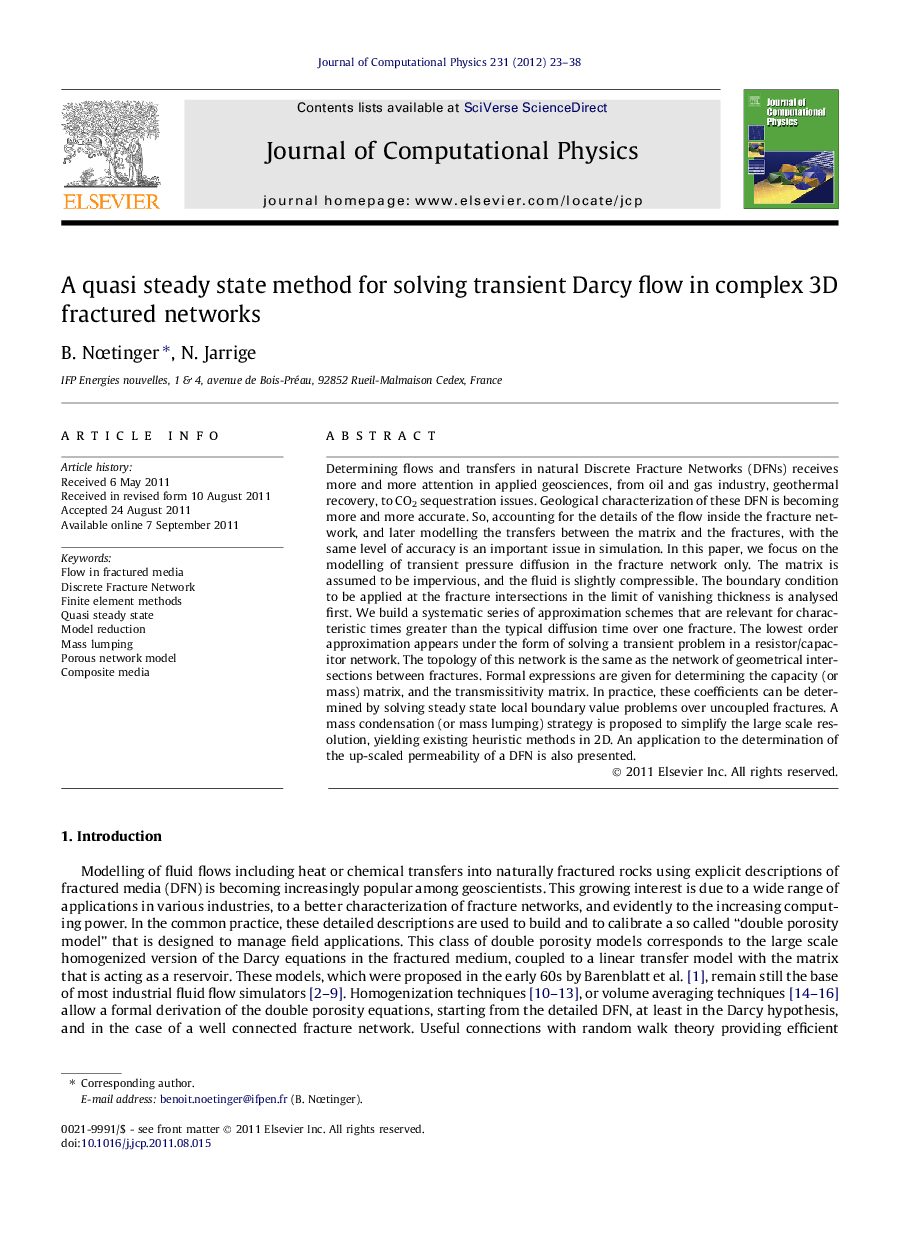| Article ID | Journal | Published Year | Pages | File Type |
|---|---|---|---|---|
| 519218 | Journal of Computational Physics | 2012 | 16 Pages |
Determining flows and transfers in natural Discrete Fracture Networks (DFNs) receives more and more attention in applied geosciences, from oil and gas industry, geothermal recovery, to CO2 sequestration issues. Geological characterization of these DFN is becoming more and more accurate. So, accounting for the details of the flow inside the fracture network, and later modelling the transfers between the matrix and the fractures, with the same level of accuracy is an important issue in simulation. In this paper, we focus on the modelling of transient pressure diffusion in the fracture network only. The matrix is assumed to be impervious, and the fluid is slightly compressible. The boundary condition to be applied at the fracture intersections in the limit of vanishing thickness is analysed first. We build a systematic series of approximation schemes that are relevant for characteristic times greater than the typical diffusion time over one fracture. The lowest order approximation appears under the form of solving a transient problem in a resistor/capacitor network. The topology of this network is the same as the network of geometrical intersections between fractures. Formal expressions are given for determining the capacity (or mass) matrix, and the transmissitivity matrix. In practice, these coefficients can be determined by solving steady state local boundary value problems over uncoupled fractures. A mass condensation (or mass lumping) strategy is proposed to simplify the large scale resolution, yielding existing heuristic methods in 2D. An application to the determination of the up-scaled permeability of a DFN is also presented.
